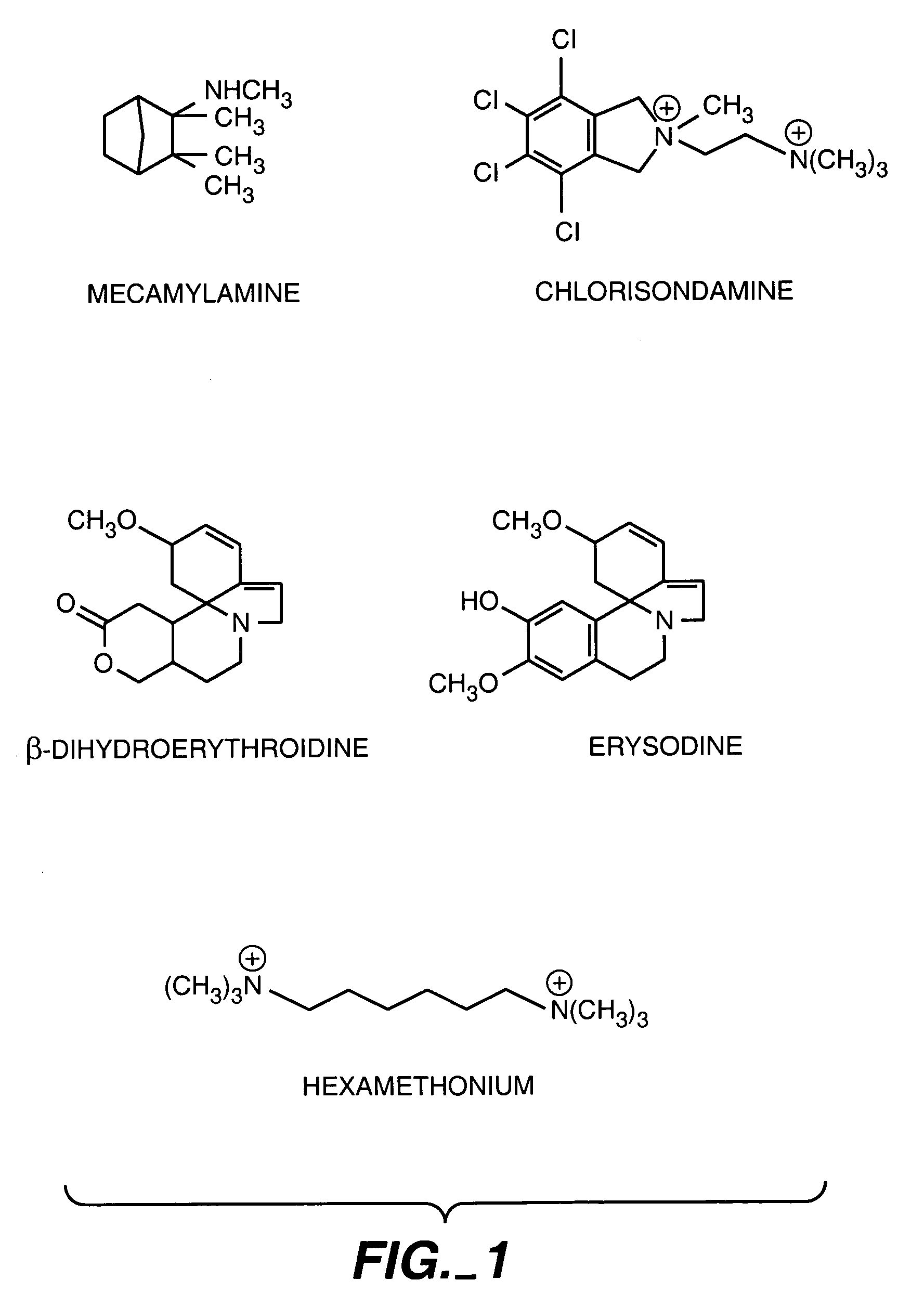Method of treating cognitive deficits in learning and memory
a cognitive deficit and learning and memory technology, applied in the field of cognitive deficits in learning and memory, can solve the problems of increasing the loss of iq score, attention and memory loss, and the inability to adequately measure the impairment of one single test such as card sorting, and achieve the effect of improving the individual's memory function
- Summary
- Abstract
- Description
- Claims
- Application Information
AI Technical Summary
Benefits of technology
Problems solved by technology
Method used
Image
Examples
examples
Clinical Examples
[0047]Patient 1 was a tall, 173-pound, 15-year-old male diagnosed with TS. He had been a patient in our clinic, receiving 2 mg of haloperidol daily and two transdermal nicotine patches (14 mg / 24 hr) each week for approximately one year for effective control of severe symptoms of TS. However, approximately two months before a scheduled follow-up visit, his tics, which had been controlled, had emerged again. At that time, his haloperidol dose was increased to 3 mg / day and the frequency of nicotine patch application was increased to every other day, with some improvement noted. However, the side effects of the nicotine patch, particularly nausea, were disturbing to the patient, resulting in his refusal to wear the patch. In addition, because of the increased risk of nicotine addiction with daily use, we were reluctant to subject the patient to continued use of the patch.
[0048]Two weeks before his visit to our clinic, the nicotine patch was discontinued. Eye-blinking, e...
PUM
| Property | Measurement | Unit |
|---|---|---|
| time | aaaaa | aaaaa |
| stereoisomer | aaaaa | aaaaa |
| disorder | aaaaa | aaaaa |
Abstract
Description
Claims
Application Information
 Login to View More
Login to View More - R&D
- Intellectual Property
- Life Sciences
- Materials
- Tech Scout
- Unparalleled Data Quality
- Higher Quality Content
- 60% Fewer Hallucinations
Browse by: Latest US Patents, China's latest patents, Technical Efficacy Thesaurus, Application Domain, Technology Topic, Popular Technical Reports.
© 2025 PatSnap. All rights reserved.Legal|Privacy policy|Modern Slavery Act Transparency Statement|Sitemap|About US| Contact US: help@patsnap.com

